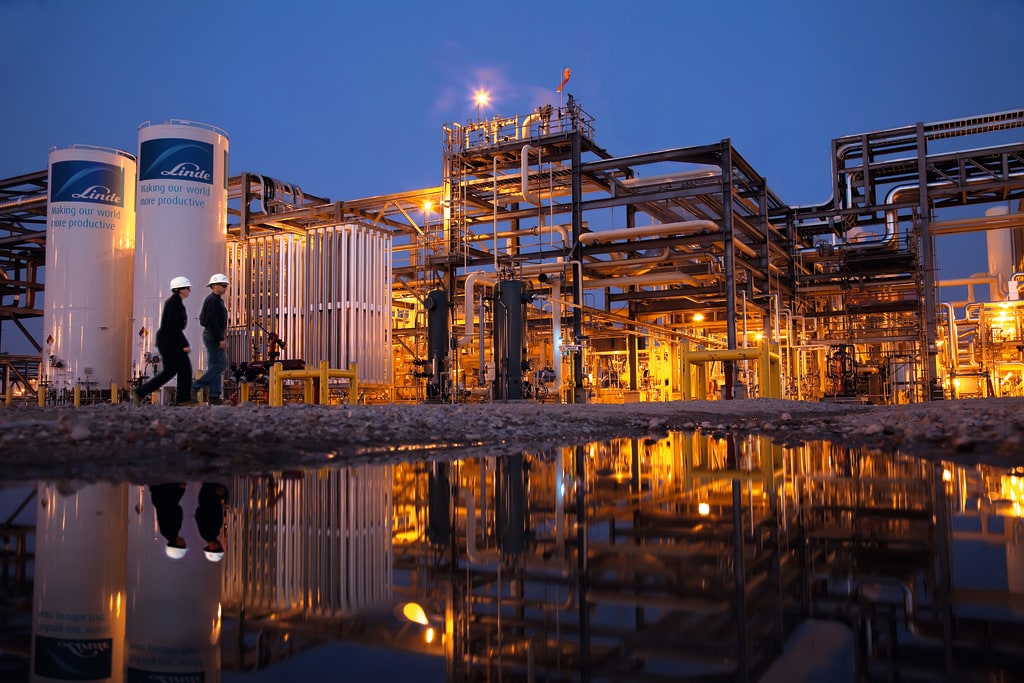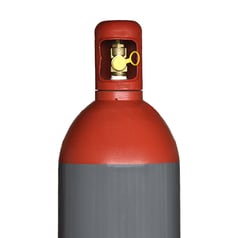Pour bénéficier d’un affichage optimal de la boutique en ligne de PanGas, vous avez besoin pour le navigateur de la version minimale suivante:
• Internet Explorer 9.0
• Mozilla Firefox 38
• Safari 8
• Chrome 45
Veuillez vous assurer que JavaScript est activé dans les paramètres de votre navigateur.
Clean energy & hydrogen
Hydrogen is the most abundant element in the universe
Although light and small, hydrogen is a powerful energy carrier - one kilogram of hydrogen contains three times as much energy as kerosene. It can be used to store excess renewable energy and then transported underground through an extensive network of pipelines or overland by truck to be used in a wide range of applications, from mobility to heavy industry. Because of its versatility, hydrogen is proving to be an important factor in the transition to low-carbon and carbon-free energy - clean energy that contributes to climate change goals.
On this page you will find information about climate change and climate change agreements, what hydrogen can do for them and what role Linde plays in the production, transport and use of hydrogen to support the energy transition.
The threat of climate change
The consequences of climate change - global warming and the accompanying shifts in climate patterns - are becoming increasingly visible for the environment, society, and the global economy. Climate change is not a threat that is far away - it is happening now.is - het gebeurt nu. 1

The global average temperature in 2021 was about 1.11 (± 0.13) °C higher than pre-industrial levels (1850-1900). 2021 is the 7th consecutive year (2015-2021) in which the global average temperature was at least 1°C higher than pre-industrial, according to data collected by the World Meteorological Organization. 1

In 2020, greenhouse gas concentrations reached a new high. Carbon dioxide levels reached 150% of pre-industrial levels (Source: United Nations) 1

Without adaptation measures, the number of people deprived of adequate water for at least one month per year will increase from 3.6 billion today to more than 5 billion in 2050. 1

With higher temperatures, a decrease in crop yields can be expected. Heat stress also leads to loss of quality and increased wastage. 2

Emissions must fall by 7.6 percent per year between 2020 and 2030 to keep temperatures from rising above 1.5°C, and by 2.7 percent per year to stay below 2°C. 1
1 - https://www.un.org/en/climatechange/science/key-findings
2 - https://www.sciencedirect.com/science/article/pii/S0095069621000450
International agreement on climate change
The Paris Agreement, an international agreement on climate change, was adopted in 2015. It aims to limit the rise in temperature from pre-industrial levels to well below 2°C, preferably 1.5°C, by reducing greenhouse gas emissions, increasing the share of renewable energy and improving energy efficiency.
As a result, more and more countries, regions, cities and the companies that supply them are setting ambitious carbon neutrality targets and looking for solutions that will enable them to achieve them - hydrogen will play an important role in the new energy system. Hydrogen as a catalyst for decarbonization.
Hydrogen as a pathfinder for decarbonization
To combat climate change, countries around the world are working on ambitious plans to switch to low-carbon energy sources, with hydrogen as the centerpiece. It is a versatile, clean and safe energy carrier that can be used as a fuel or as an industrial feedstock. When used in a fuel cell, it produces no emissions because it emits only water vapor, making it a strong contender to decarbonize transportation. It can be stored and transported in liquid or gaseous form with high energy density and is available for a wide range of applications that can reduce their carbon footprint to zero emissions.
With increased use of clean hydrogen and subsequent improvement of associated technologies, hydrogen could be the most competitive low-carbon solution in terms of total cost of ownership (TCO) by 2030 for more than 20 applications, including long-haul trucks, shipping and steel.

On the road to green hydrogen
Hydrogen is colorful - it takes on different colors depending on the intensity of net carbon dioxide emissions, the production method and the feedstock content, with green hydrogen with zero or negative net CO2 emissions being the ultimate goal.
Linde has been harnessing the power of hydrogen for more than 100 years, continuously investing in effective and economical processes to deliver gray, blue and ultimately green hydrogen.
We can produce hydrogen from a range of raw materials and natural resources. We use steam methane reforming (SMR) to produce gray hydrogen from natural gas, liquefied petroleum gas (LPG) or naphtha. SMR is currently the most widely used process for producing hydrogen. Gray hydrogen can be converted to blue hydrogen by using carbon capture and storage technologies. Green hydrogen can be produced by electrolysis using renewable energy. An alternative method for producing green hydrogen is methane steam reforming using biomass as a feedstock. Gray and blue hydrogen are important stages on the road to green hydrogen because they allow for the development of the necessary framework and infrastructure while green hydrogen production reaches the required scale.
Hydrogen in action
- Green steel production: Using hydrogen in combination with oxygen from Linde, we work with customers to make steel production processes more sustainable. By using less natural gas and replacing it with H2 and O2, we prevent CO2 and other emissions. A good example of the application of hydrogen in practice.
- Public transport on hydrogen: Linde's hydrogen is used to power a fleet of buses in public transport in the Emmen region. As a result, the buses no longer emit exhaust gases but pure water.
- TU Delft's Forze race car: A hydrogen-powered race car, sponsored by Linde. The Forze team at TU Delft is constantly working on the development of a new 'Forze' model. Together with students from Rotterdam University of Applied Sciences, the team aims to develop sustainable technology and present it in an attractive way.
- The Shell Eco-marathon: This event is one of the world's most challenging innovation competitions for students, and takes place annually in Europe, America and Asia. For many years, Linde has been a global partner of the Shell Eco-marathon, as the exclusive hydrogen supplier.





